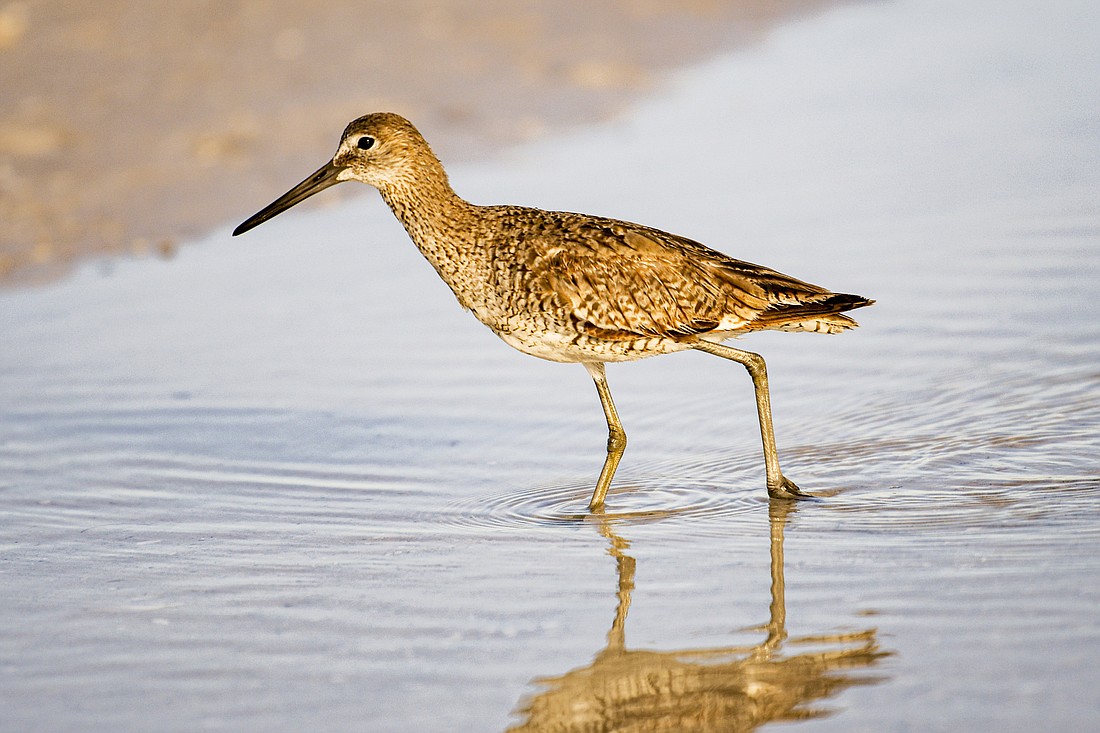- April 11, 2025
-
-
Loading

Loading

Though not the flashiest of shorebirds, these common, stocky birds, with their their long legs, and long, straight bills (which are considerably longer than their heads), do hold the distinction of being among the larger members of the sanderling family.
With their mottled brown plumage when breeding and plain gray otherwise, they tower above other sanderlings. But they always reveal their distinctive black-and-white under-wing pattern when they take flight, which makes them easier to identify.
Two distinct subspecies of willets occur in North America: one that breeds in the East and another that breeds in the West. Both varies can be found in Florida in the winter. But only the eastern willets spend their summers here.
On our beaches, you'll often spot willets walking close to the water's edge, where they scavenge for invertebrates and small fish. Because they find prey using the sensitive tips of their bills, and not just eyesight, willets can feed both during the day and at night.
These fairly plain-feathered birds were not targeted by the plume trade, which decimated so many shorebird species. But they too were nearly driven to extinction in the 19th century, as they were widely hunted for food. Due to their size, they were an easy mark for hunters.
And, many found them very good to eat. Even John James Audubon, famous ornithologist and naturalist, noted how tasty willets, their offspring and even their eggs, were.
Now protected by the Migratory Bird Treaty Act, willets, like all shorebirds, are still threatened by loss and degradation of their habitats. And climate change and rising sea levels may cause them to lose their feeding and breeding locations.
Save our Seabirds is a non-profit organization whose mission is to rescue and rehabilitate
sick and injured birds, releasing as many as they can, while educating our community about
avoiding injuries and preserving habitats.